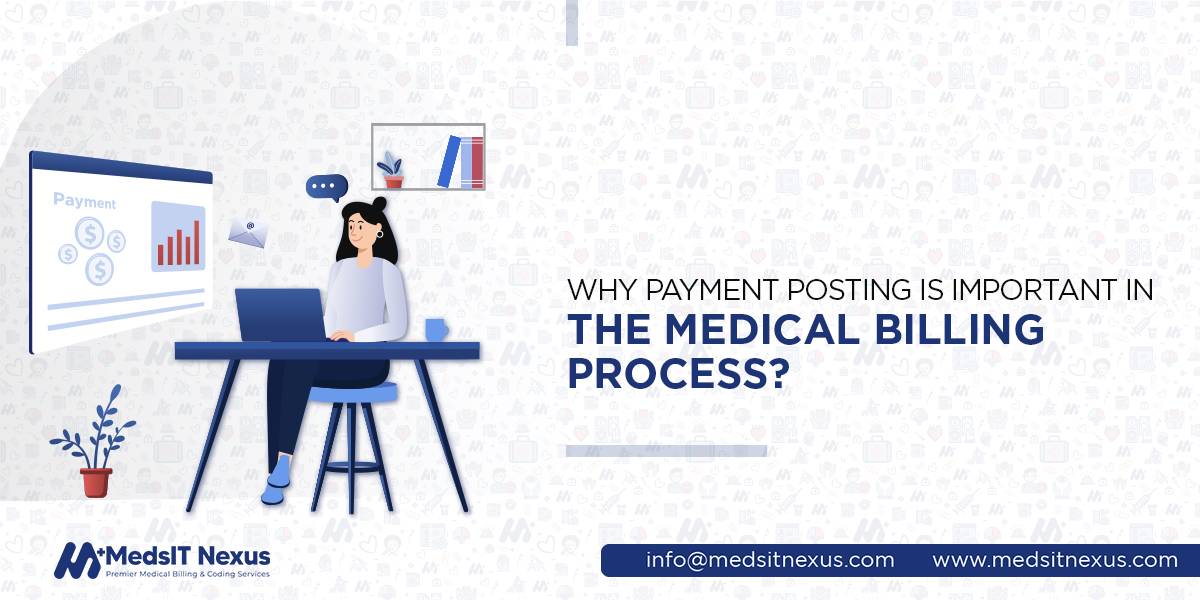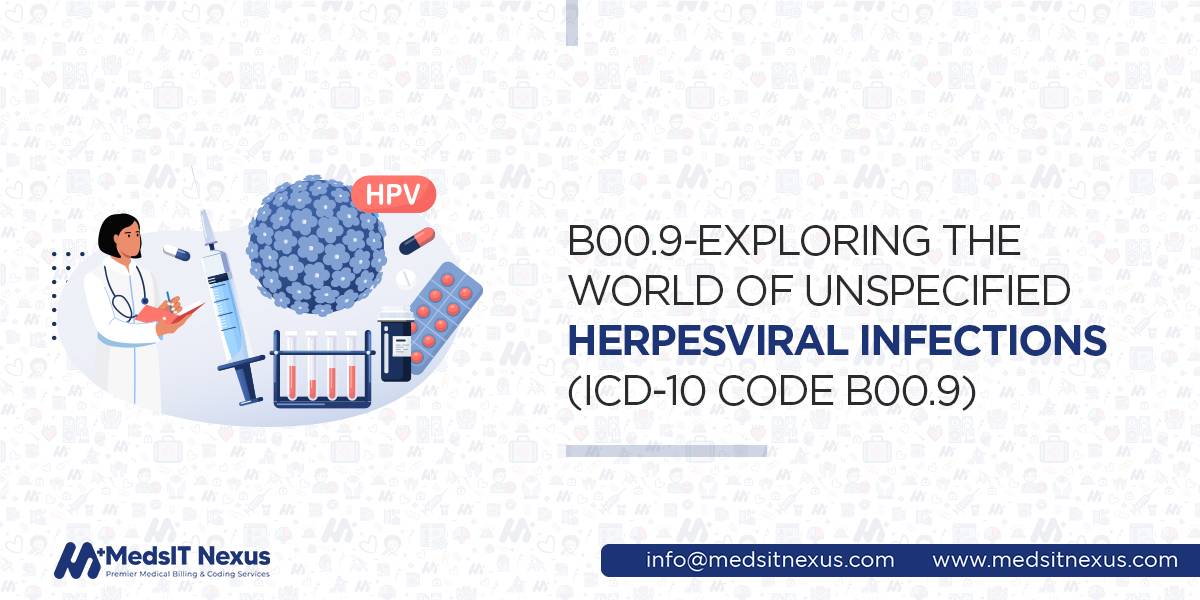Why payment posting is important in the medical billing process?

Payment posting or Cash Posting is the last but the most crucial step in the practice revenue cycle management where the payments are logged into the provider’s practice management software once the claim has successfully passed through the insurance claim adjudication process and the patient has paid all of their financial liabilities including copay’s, co-insurance and the deductibles. It is also considered an integral part of revenue cycle management because financial health, practice efficiency, and patient care depend on the successful completion of payment posting.
Why is accurate payment posting important in the medical billing process?
Although payment posting is a most complex part of revenue cycle management, medical organizations must maintain efficiency up to the maximum level for simplifying billing, alleviating many administrative burdens, and identifying new revenue opportunities to strengthen the bottom line of their medical practices. To determine the cash flaws in the medical practices, you must streamline the payment posting process, as it gives you a clear view of the daily revenue stream and proactively addresses errors before the other aspects of the businesses get affected. If medical organizations do not consider processing payment posting accurately, it could raise grievous consequences in your revenue cycle management. Some downstream effects of inaccurate payment posting are listed to demonstrate the importance of payment posting in medical billing.
Inaccurate credits
When posting insurance payments to the practice management software of a medical provider, a $90.00 adjustment can become a $9000.00 adjustment with a simple typo mistake. It could cause subsequent balances due if left uncorrected or unnoticed. This amount may be used to provide medical treatment with no money from the patient. Because of your inefficient staff, your medical practice costs $9000.00.
Defaulted Account Receivables
When the patient’s concerned insurance carrier processes a claim to reimburse the medical services, the wrong input of credit balances in the practice management software conflicts with an aging report of the insurance company, which shows a balance of $10.00.This would result in the default of the medical provider’s account receivables.
Erroneous patient statements
When the wrong financial transaction information is inserted into the practice management software, its consequences remain active until patients receive statements for balances they owe. When the patients receive statements for balances they do not owe, they are often confused by the insurance billing process, which may result in the loss of returning patients. Now, in addition to losing revenue, you are also losing the patients from where your future revenue is expected.
Benefits of payment posting in medical billing
Pass in 2020, the volume of patients for primary medical care unexpectedly decreased because of COVID-19; this completely sabotaged the financial health of medical providers. About one of the five medical practices experienced a drop of 50% in revenue, which was severely impacting their long-term viability unless substantial action was taken.
But fortunately, pandemic-related restrictions have eased, and practices are seeing patient volumes increase more than in the covid-pandemic. The workforce has been overwhelmed by the financial tasks letting them make periodic errors in practice management. This situation causes medical providers to look at ways to troubleshoot the flaws in their practice management workflow processes to increase their practice revenue.
According to the researchers, medical practices experience flaws in revenue cycle management because of the inefficient payment posting process. Therefore, in this post, we will demonstrate to you the best practices of payment posting in the RCM; you can integrate them into your existing RCM to capture, manage, and collect patient service revenue effectively; this would help you maintain better control over the revenue cycle and overcome their most pressing financial challenges.
Easier to analyze your medical office revenue cycle
The medical organizations primarily adjudicate a prepared claim before it is submitted to the insurance carrier to adhere to the state of law. When the payment posting is processed electronically, it helps prevent data entry errors such as misspelled patient’s name or any other related incomplete or inaccurate information before it is submitted for payment. This way, you analyze all the corresponding parts of the payment posting, significantly increasing the number of reimbursed claims.
Determining and eliminating recurring issues
In medical organizations, there is a flow of medical claims that process every single day. If there are flaws in the claims, more time will be consumed to fix the problems if your revenue cycle management lacks an efficient payment posting system which causes medical providers to wait for a long time to get paid. As the efficient payment posting is an electronic process that streamlines the reimbursement workflow processes, its absence in the medical practices saddled them with incomplete payments to post, lack of electronic remittance advice file enrollments, reconciling data from the explanation of benefits documents, and electronic remittance advice to ensure accuracy of payments.
Strengthens present processes
In fact, all of the processes in the revenue cycle management are interconnected with the payment posting; hence if this process lacks efficiency will impact all other parts of practice management. Therefore, medical organizations need to focus significantly on this critical part of revenue cycle management to have a great opportunity to positively impact their overall revenue cycle.
Minimize the denial resolution time
Establishing an effective denial prevention program can gradually weaken the limited medical practice revenue and resources, which is critical for the long-term success of your practice. The good news is that deploying an efficient payment processing system can help medical practices effectively mitigate the risk of denials by identifying the payer problems such as medical necessity denials, services that are not covered, or when prior authorization is required that can then be quickly addressed before they delay care or result in costly billing mistakes.
Facilitates data analytics and reporting
Medical organizations process thousands of claims daily, and insurance companies are unlikely to reject 60 percent of the claims, which are never reimbursed. Because medical practices lack an efficient data analytics and reporting system, a significant component of payment posting, they do not have clear insights into why claims are denied.
Therefore, an advanced integration of payment posting in the revenue cycle management allows you to use the data to address revenue cycle concerns, be aware of the insurance and reimbursement terms intelligently, and the actual financial health of your organization.
Benefit from accurate payment posting services at MedsIT Nexus
MedsIT Nexus medical billing and coding services are driven by a proficient workforce who have deep insights into the benefits and sensitivity of the process. Our environment is equipped with advanced healthcare technology to improve the payment posting process effectively, as it affects many other A/R functions of the practice. Furthermore, we apply the best practices in quality assurance and information security to ensure your outsourced payment posting is completed per your business requirements while upholding industry standards.
Dr. Sana Pervez, Pharm.D, CCS, CPC -
Clinical Compliance Advisor at MedsIT Nexus
Responsible for Medical and compliance review of all healthcare RCM and billing content before publication.






